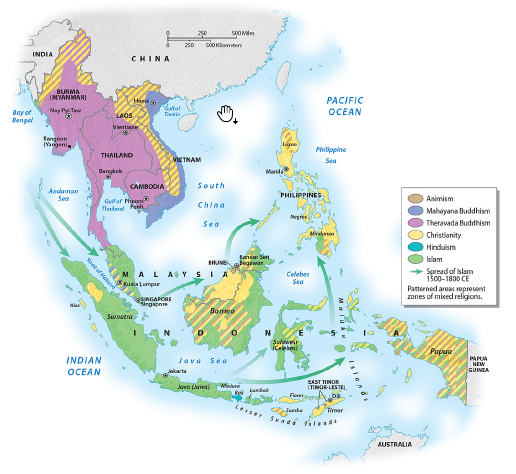Describe the religious geography of contemporary Southeast Asia, making certain to address how the landscape has shifted over time.

What will be an ideal response?
Hinduism was once the dominant religion in both mainland and insular Southeast Asia. Hinduism faded into the past (excepting the Indonesian island of Bali) as Islam, Buddhism and Roman Catholicism arrived into the region. Buddhism came from India and spread across mainland Southeast Asia. The contemporary nations of Burma, Thailand, Cambodia, Vietnam and Laos are all Buddhist-majority nations today. Islam arrived in the 13th century via seafaring merchants where it was adopted by the peoples of what today constitute Indonesia and alaysia.
Roman Catholicism is newest import into the region having been brought by the Spanish and the Portuguese. The Philippines and East Timor are contemporary Roman Catholic nations in Southeast Asia
You might also like to view...
The solar constant
A) is the same throughout the solar system. B) varies inversely with the fourth power of an object's distance from the Sun's surface. C) is independent of the Stefan-Boltzmann law. D) is higher for Earth than for Mars.
The so-called Tornado Belt, or Tornado Alley, of the United States is located ____
A) in Florida B) in the Central Plains C) in the middle Atlantic states D) along the Gulf Coast
How many dipeptides can be made using the 20 standard amino acids?
A) 20 B) 40 C) 200 D) 400
In comparison to other parts of North America, scientists believe that the Far North will face ________ impacts from global climate change
Fill in the blank(s) with correct word